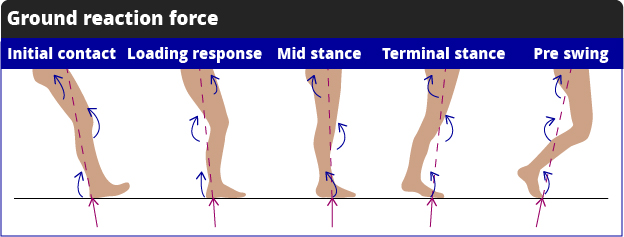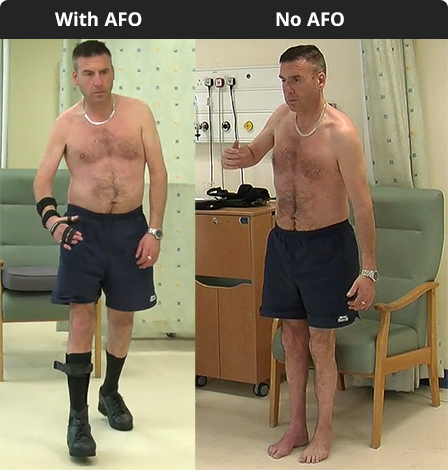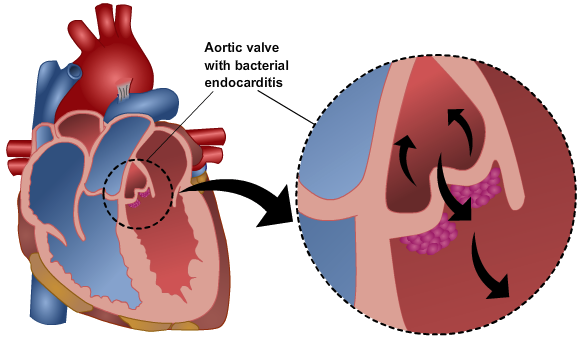- Prochaska J, O., DiClemente C.C. The transtheoretical approach: crossing traditional boundaries of therapy. Home wood, Illinois: Dow Jones-Irwin; Dow Jones-Irwin Dorsey Professional Books.1984
- Readiness to Change Ruler
- http://www.healthscotland.com/
- NICE
Category: Advancing Modules
Ground reaction force
The ground reaction force (GRF) is the force exerted by the ground on a body in contact with it.

In stance phase, the ground reaction force is aligned as closely to as many joints as possible, minimising the external moments and thus minimising the biomechanical demand on the neuromuscular system. At times the GRF alignment passes from one side of the joint to the other, “switching” the moment.

Application to the secondary prevention of stroke: lifestyle issues
The Stages of Change model is useful when supporting patients and their families to change lifestyle behaviours that put them at risk of stroke or recurrent stroke, for example:
- Smoking/using tobacco
- Using illicit drugs
- Excessive alcohol consumption
- Unhealthy diet
- Inactive lifestyle
SMART Goals
| S – specific | Being specific about the goal helps us to focus our efforts and clearly define what we are going to do. It is the What, Why, and How. |
| M – measurable | Choose a goal with measurable progress, so you can see the change occur. |
| A – achievable | Set a goal that you know you are capable of reaching if you put your mind to it, otherwise you may lose interest. |
| R – realistic | Your goal has to be realistic. If it is too difficult, you set yourself up for failure. If it is too easy you will soon lose motivation. Set the goal for a satisfying achievement! |
| T – timely | Setting a timescale to achieve the goal is important because if you do not set one it is easy to put off and put off! It is easier if you have a timetable to work with. |
Diagrammatic representation of the model
The ‘Stages of Change’ model
In the late 1970s- and continuing into 1980s- Prochaska and DiClimente developed a ‘stages of change’ theory to explain the processes associated with behaviour change.
They describe a ‘stages of change’ model, which identifies the 6 stages of change:
- Pre-contemplation
- Contemplation/Thinking
- Preparation/Planning
- Action/Making change
- Maintenance or
- Relapse
If healthcare professionals are able to assess and recognise which stage an individual is at, they will be better able to intervene appropriately and effectively.
Behaviour change
Introduction
- Choosing a healthy lifestyle promotes an individual’s chances of good health
- An individual’s lifestyle behaviour is influenced by values and beliefs
- Individuals find it hard to initiate and difficult to maintain changes to their lifestyle behaviour(s)
- Individuals considering change may feel frightened or anxious
- If healthcare professionals promote and support lifestyle behaviour change, their intervention may have a positive effect upon the success of the individual’s attempt to make a change
- In order to support lifestyle change, health professionals need to understand the psychological processes associated with health beliefs and behaviour change
- Actions include delivering a brief intervention and supporting individuals to set SMART (Specific, Measurable, Achievable, Realisitc, Timed) goals, if appropriate
Infective endocarditis – approaches to treatment
- Intravenous antibiotics for several weeks
- Replacement of the affected heart valve(s), ideally once the infection is controlled.
- Avoiding anticoagulation which increases risk of intracranial bleeding
- Possible use of antiplatelet drugs
Quiz
Bacterial endocarditis
Introduction
- Infection on heart lining or valves which have a poor blood supply and so often cannot get rid of infection
- Depending on bacteria causing infection may present as a severe acute illness (e.g. staphylococcus aureus) or more chronic illness developing over weeks or even months (e.g. streptococcus milleri)
- Infected vegetations on the heart valves can embolise to the brain and cause stroke, or to other organs (see illustration below)
- Emboli may block blood vessels causing ischaemic stroke or cause the blood vessels to become aneurysmal and to rupture causing a haemorrhagic stroke
- Most commonly affects the mitral and aortic valves. If affects tricuspid or pulmonary valves unlikely to cause strokes
- May be detected on transthoracic echocardiogram but transoesophageal echocardiography more likely to show vegetations
- Positive blood cultures after stroke may indicate the presence of endocarditis
- Mostly seen in people over 50 years of age and men are twice as likely to be affected than women.
- Those having an existing heart valve replacement or surgery to repair a congenital heart defect are more at risk. Can be related to poor dental health. NHS: Endocarditis



